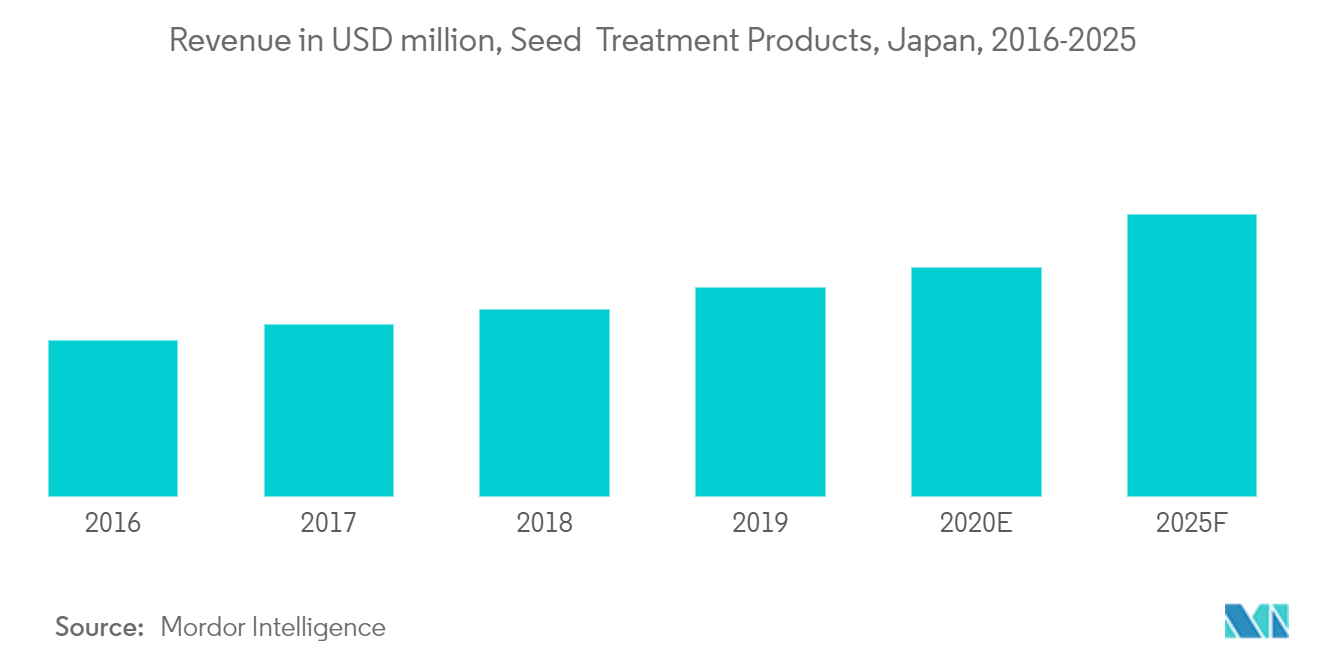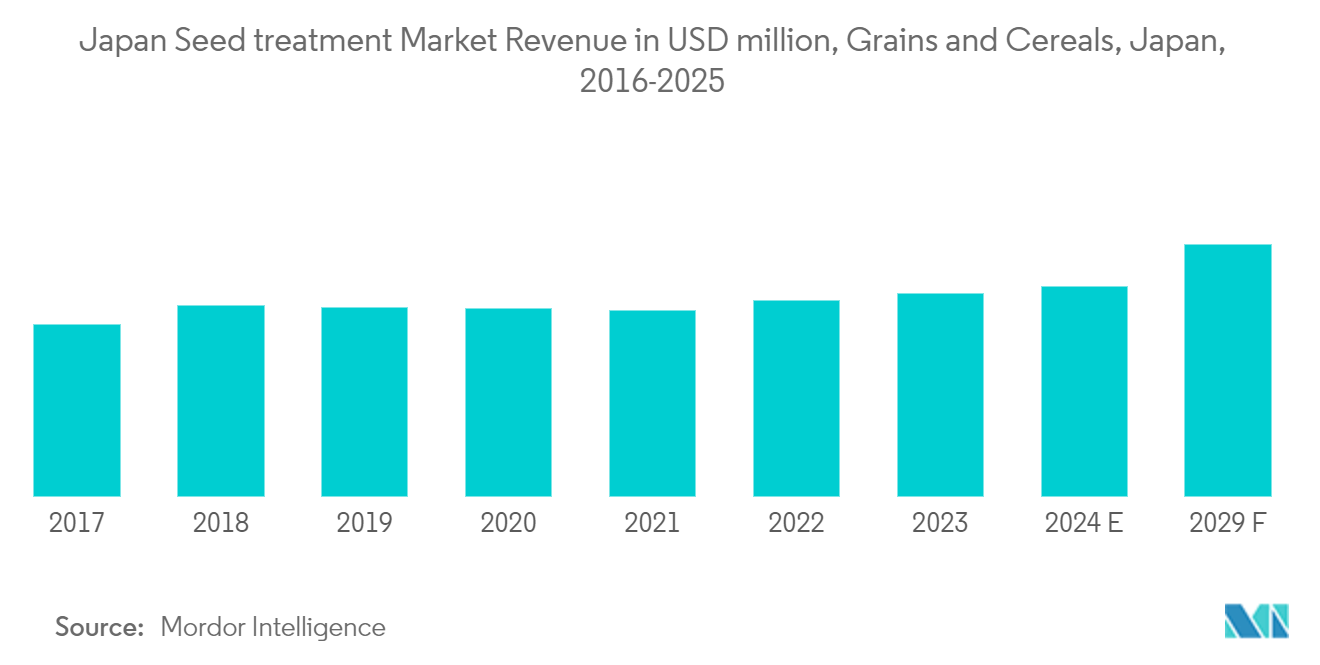Market Trends of Japan Seed Treatment Industry
Rise in Cost of High Quality Seeds
The changing agro-climatic conditions threaten crop productivity. Sustaining agricultural productivity is a major concern in Japan, and the solution is often costly using high-yielding quality seeds. The high costs associated with hybrids and Genetically Modified (GM) seeds are a major factor driving the growth of the seed treatment market. With higher regulatory issues relating to fumigation and foliar application of pesticides in place, seed treatment is being increasingly considered by farmers as a mode to protect high investments made on good quality seeds. Owing to the increasing demand, for high-quality seeds, seed costs are also increasing with desirable agronomic traits. Both companies and farmers of the country are ready to spend extra for seed treatment solutions to save costlier high-quality seeds.

Grains and cereals Dominating the Market
With a market share of 59.2% in 2022, grains & cereals accounted for the majority of seed treatment chemical usage in Japan. Grains & cereals, such as rice, wheat, barley, and corn, are staple food crops in Japan. These crops are susceptible to various pests, diseases, and pathogens that can significantly impact yield and quality.
Over the past few years, rice exports from Japan have grown. The quantity of brown and polished rice exported surged from 4,515 metric tons in 2014 to 22,833 metric tons in 2022, demonstrating a fivefold increase during this period. This will further drive the market.
The use of polymers associated with the chemical treatment of seeds is a promising technique for use in grains, promoting better adhesion of the products to the seeds, minimizing the contamination to man and the environment by reducing dust, and preventing the leaching of chemical products.


